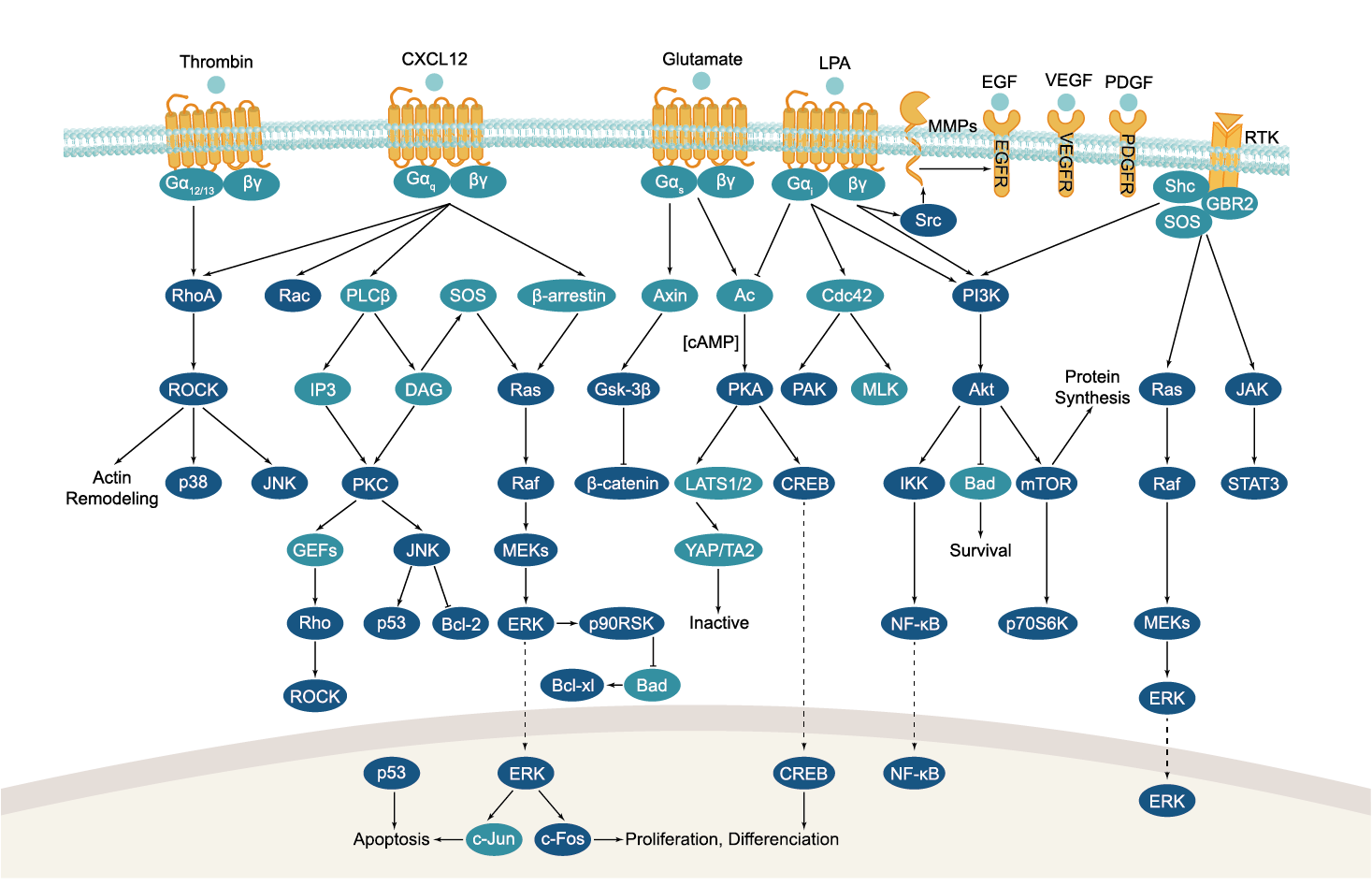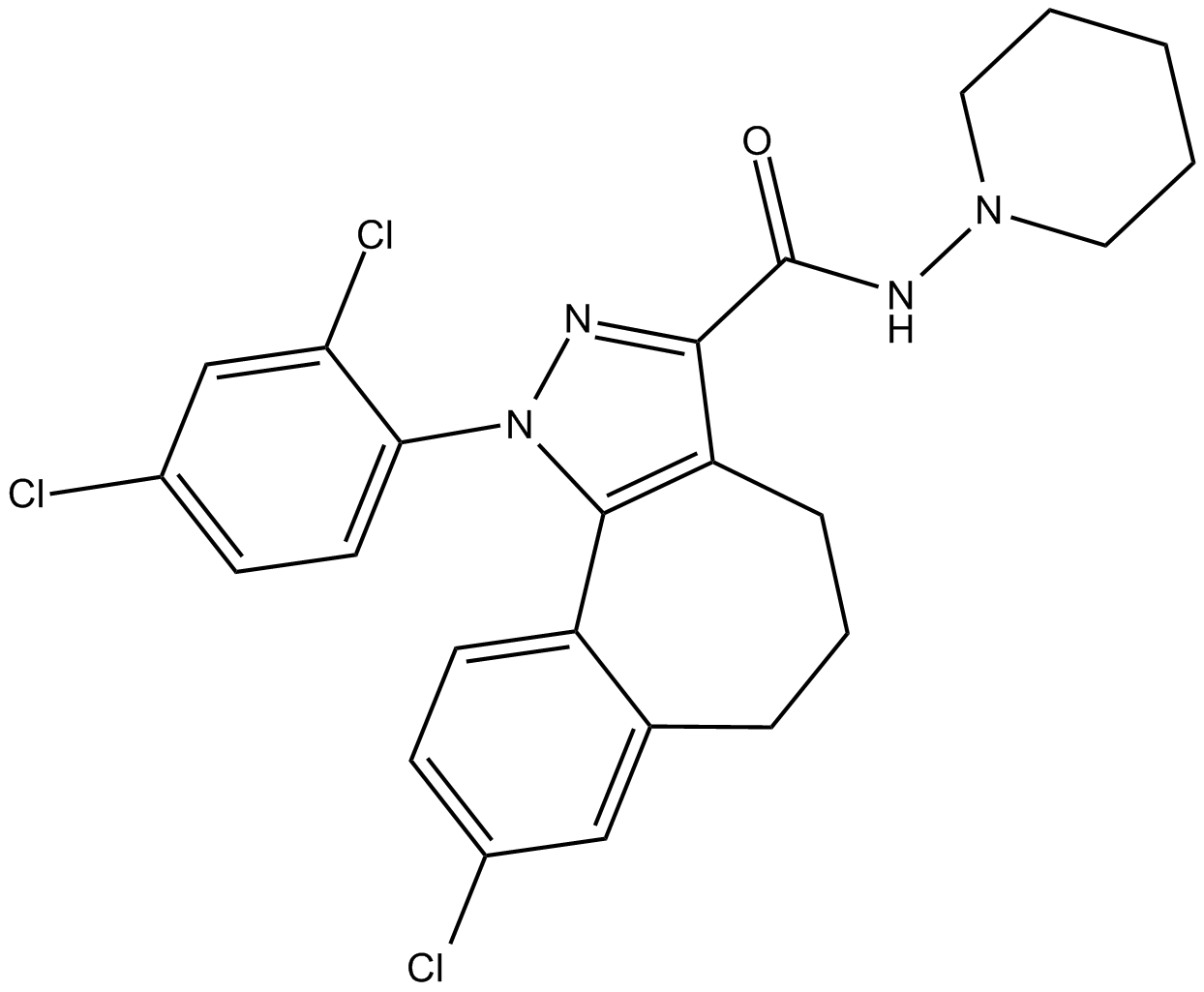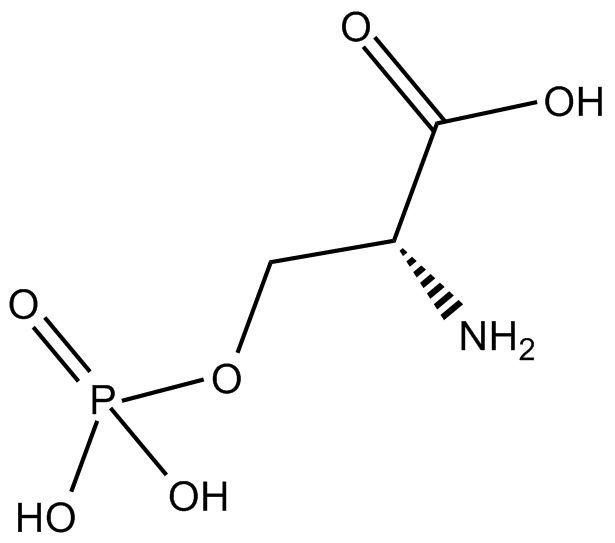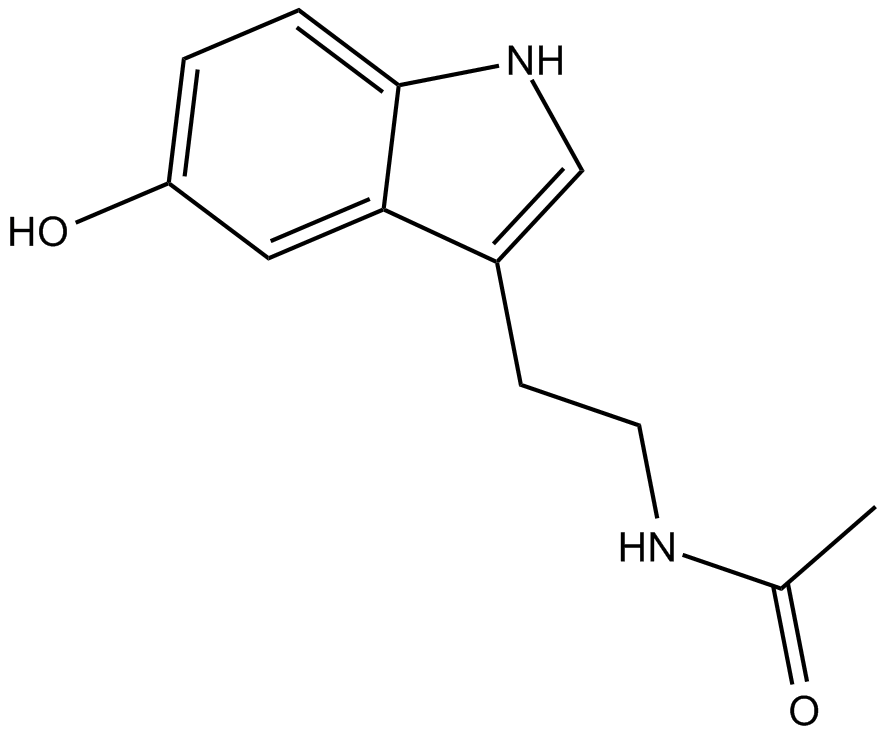GPCR/G protein


All GPCRs share a common seven trans-membrane structure. GPCRs are associated with heterotrimeric G-proteins which are GTP-binding proteins made of alpha, beta, and gamma subunits. When a ligand binds to GPCR, it activates the attached G-protein, the GDP is replaced with GTP. The activated G-protein then dissociates into an alpha and a beta-gamma complex which activates downstream signaling pathways. These intracellular signaling pathways include cAMP/PKA, calcium/NFAT, phospholipase C, protein tyrosine kinases, MAP kinases, PI-3-kinase, nitric oxide/cGMP, Rho, and JAK/STAT.
GPCRs are one of the most important therapeutic targets for various diseases, over 30% of all modern medicinal drugs target this family. Aberrant GPCR functions are involved in pathological conditions such as neurological, immunological and hormonal disorders. A large number of GPCRs have been identified, but whose ligands are not known, are classified as orphan receptors.
-
 C5385 Butenoyl PAFSummary: PAF receptor agonist
C5385 Butenoyl PAFSummary: PAF receptor agonist -
 C5389 (±)trans-2,5-bis-(3,4,5-Trimethoxyphenyl)-1,3-dioxolaneSummary: PAF receptor antagonist
C5389 (±)trans-2,5-bis-(3,4,5-Trimethoxyphenyl)-1,3-dioxolaneSummary: PAF receptor antagonist -
 C5552 TetrahydromagnololSummary: peripheral CB2 receptor agonist
C5552 TetrahydromagnololSummary: peripheral CB2 receptor agonist -
 C5311 NESS 0327Summary: extremely potent cannabinoid (CB) receptor antagonist
C5311 NESS 0327Summary: extremely potent cannabinoid (CB) receptor antagonist -
 C5282 Adenosine Kinase Inhibitor (hydrate)Summary: inhibitor of adenosine kinase
C5282 Adenosine Kinase Inhibitor (hydrate)Summary: inhibitor of adenosine kinase -
 C5286 (R,S)-AtenololSummary: β1-adrenergic receptor antagonist
C5286 (R,S)-AtenololSummary: β1-adrenergic receptor antagonist -
 C5329 Calindol (hydrochloride)Summary: activator of the calcium-sensing receptor (CaSR)
C5329 Calindol (hydrochloride)Summary: activator of the calcium-sensing receptor (CaSR) -
 C5331 O-Phospho-D-SerineSummary: weak agonist of the metabotropic glutamate receptor mGluR4
C5331 O-Phospho-D-SerineSummary: weak agonist of the metabotropic glutamate receptor mGluR4 -
 C5367 6-OAUSummary: synthetic agonist for GPR84
C5367 6-OAUSummary: synthetic agonist for GPR84 -
 C5386 N-AcetylserotoninSummary: an agonist at the melatonin receptors MT1, MT2, and MT3
C5386 N-AcetylserotoninSummary: an agonist at the melatonin receptors MT1, MT2, and MT3


